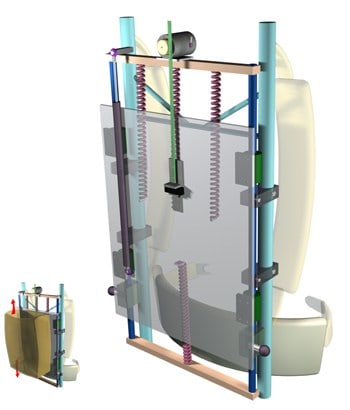Scientists in the US have invented a back-pack that converts the up and down motion of walking into electricity. The device can generate 7.4 watts and could be used by field scientists, aid workers and soldiers to power mobile phones, GPS instruments and other devices without having to carry heavy replacement batteries (Science 309 1725).

“We have for the first time generated significant levels of electricity from normal human movement,” says Lawrence Rome of the University of Pennsylvania and the Marine Biological Laboratory in Massachusetts. Previous attempts to generate electricity from walking relied on devices built into shoes but this only produced about 20 milliwatts of power. Although high forces are exerted when the shoe touches the ground, little or no mechanical work – which is given by the product of force and distance – is done because of the short distances involved.
To overcome this problem, Rome and colleagues exploit the up and down movement of the hips that occurs during walking, which can be as high as 5–7 centimetres. “If you are carrying a load in the back-pack, it has to go up and down the same vertical distance on each step as your hip,” explains Rome. The team calculated that it takes considerable mechanical work – about 18 Joules per step – to lift a backpack weighing 36 kilograms through a distance of 5 centimetres. This mechanical work can then be converted into electricity.
The new back-pack is based on a rigid-frame pack similar to those used by hikers. However, the compartment carrying the load is suspended from the frame by vertical springs. As the hips drive the frame of back-pack upwards, the load lags behind it, which causes a differential movement between the two. Mechanical energy is extracted by attaching a toothed rack to the load plate, which meshes with a toothed gear on the frame. This gear is attached to a generator that can produce electricity. This electricity can be used as it is generated or it can be stored in a lightweight rechargeable battery.
Test performed on six male volunteers who used the back-pack while walking on a treadmill showed that they used less energy to generate electricity than expected. Moreover, the volunteers could generate more electricity by simply walking faster or carrying a heavier load.
The team now plans to improve the rechargeable batteries that go with the back-pack and Rome has set up a company called Lightning Packs LLC to develop the device further.



